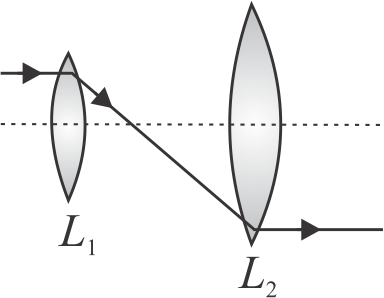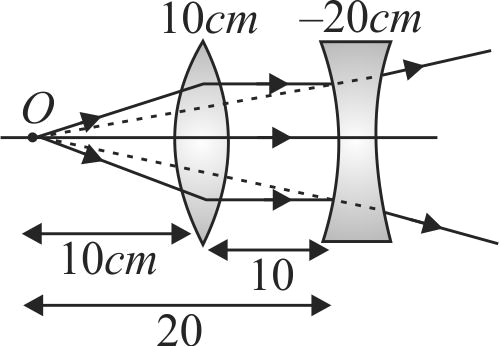364777 An object is placed \(40 {~cm}\) away from a convex lens of focal length \(15 {~cm}\) and a sharp image is formed on a screen. Now a concave lens is placed in contact with the convex lens. The screen now has to be moved away from the lens system by \(96 {~cm}\) to get a sharp image again. What is the focal length of the concave lens ?
364777 An object is placed \(40 {~cm}\) away from a convex lens of focal length \(15 {~cm}\) and a sharp image is formed on a screen. Now a concave lens is placed in contact with the convex lens. The screen now has to be moved away from the lens system by \(96 {~cm}\) to get a sharp image again. What is the focal length of the concave lens ?
364777 An object is placed \(40 {~cm}\) away from a convex lens of focal length \(15 {~cm}\) and a sharp image is formed on a screen. Now a concave lens is placed in contact with the convex lens. The screen now has to be moved away from the lens system by \(96 {~cm}\) to get a sharp image again. What is the focal length of the concave lens ?
364777 An object is placed \(40 {~cm}\) away from a convex lens of focal length \(15 {~cm}\) and a sharp image is formed on a screen. Now a concave lens is placed in contact with the convex lens. The screen now has to be moved away from the lens system by \(96 {~cm}\) to get a sharp image again. What is the focal length of the concave lens ?
364777 An object is placed \(40 {~cm}\) away from a convex lens of focal length \(15 {~cm}\) and a sharp image is formed on a screen. Now a concave lens is placed in contact with the convex lens. The screen now has to be moved away from the lens system by \(96 {~cm}\) to get a sharp image again. What is the focal length of the concave lens ?




